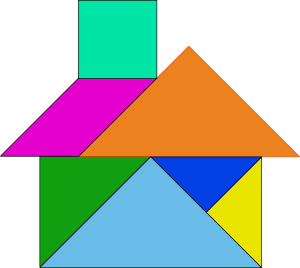Good old-fashioned fun, outdoors or in, sadly seems to be a thing of the past since today’s children are too busy with organized sports, specialty lessons, TV or video games, and too much homework to indulge in simple pleasures like hopscotch, street games, or checkers.
Choosing to school at home changes the mindset from organized learning by the bell to a more free form approach, providing more time while also opening a wonderful window for fun and games.
Games played to pass the time and simply have fun are, it turns out, more helpful than we realized. Most games involve strategy and movement (either strength-building large muscle or coordination-focused small muscle movement) both of which immeasurably enhance the learning process.
And the more vigorous the game, the more oxygen to the brain, which promotes healthy neurological growth as well as greater capacity and ability with both learning and memory. Games that require coordinated use of the hands and limbs also promote right-left brain integration which greatly aids thinking and general intelligence.
Here are a couple “brain games” that can be played indoors or out!
FIVESTONES
This game is more than 2,000 years old, is the predecessor of today’s JACKS, and is best played by kids 8 and older because it requires a lot of eye-hand coordination. Each player starts with five small stones in hand, throws and catches them, and picks them up off the ground in five separate throws, with each player picking up where s/he left off for every turn. It may be played solo or competitively with others. Here are the throws:
5’s
The stones are tossed up in the air from a cupped palm, the hand is turned over, palm down, and all five stones are caught on the back of the hand. The stones are tossed up again and caught in the palm. If all five stones fall to the ground, the turn is over. If four or fewer fall, the player goes on to the next throw.
1’s
Four stones are scattered on the ground, and the one left in the player’s hand is thrown into the air. One stone at a time is scooped up before the tossed stone is caught with the same hand. This is repeated until all four stones are picked up.
2’s
Four stones are scattered on the ground, and this time the player picks up two stones at a time while the one stone is airborne, till s/he has picked up all four.
3’s
For this turn, one stone is picked up the first time, then three are picked up.
4’s
This is the fifth and final throw, and all four stones must be picked up. The first player to complete all five throws is the winner.
TANGRAM TRADES
Tangram is loosely based on an old Chinese puzzle game. In this version, players create their own jigsaw puzzles then trade them and race to put the pieces back together. You will need a pair of scissors and a piece of cardboard that’s the same size for every player (shirt cardboard or cut up poster board will do). Three or more players from 7-11 years old are recommended.
Players make several straight-line cuts (decide how many and whether they are cut on angles for more or less complexity). Pieces are then scrambled and at the signal from a supervising adult or older child, slid over to the player to the right.
Players must reconstruct the pieces into their original rectangular shapes. When a player succeeds, s/he calls out and play stops while it’s determined by the supervisor if the puzzle has been solved. If so, that player scores 10 points.
The puzzles are passed on again until every player has had a turn with all the puzzles, and the player who scores the highest at the end is the winner.
So have fun playing games! For the fun of it, and for better all-around learning.



















